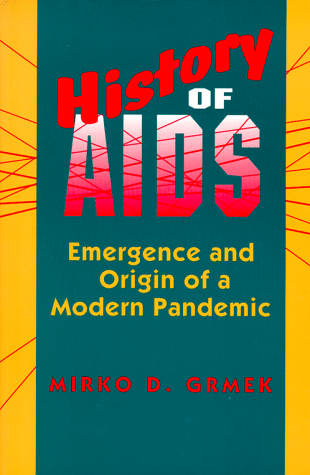Michael Fumento
Factual · Powerful · Original · Iconoclastic
Exacerbating the AIDS Panic
November 12, 1990 · Michael Fumento · Michael Fumento · AidsThe natural tendency of any book addressing any problem is to exaggerate the problem, since the greater the problem the more important the book seems. Mirko D. Grmek’s awkwardly titled History of AIDS, translated from the original French, is an important book, but Grmek, like so many others who have written about the disease, often blows the facts out of proportion. He writes that while cases of heterosexual transmission of AIDS in the U.S. are low, "It is entirely possible that this situation could change [and] American AIDS could come to resemble [that] of Africa."

Grmek then goes on to contradict this statement in his next paragraph, noting that disease is spread far more easily through heterosexual intercourse in Africa than it is in the U.S. and Europe. He also declares that "AIDS will be the main cause of death for persons [worldwide] under age 50 [and] the cost for these patients will be greater than for any other disease." Nonsense. Even the grossly inflated World Health Organization estimates of HIV infection for Africa show fewer total infections there than the number of persons on that continent who die of malaria and tuberculosis each year, and neither of these is a disease of old age. In the U.S., cancer costs are more than 30 times AIDS costs.
Similarly, The AIDS Disaster relies on case projections put forth by the Government Accounting Office and the Hudson Institute last year, both of which indicate that the Federal Centers for Disease Control’s original estimates were far too low. In fact, since those estimates came out, an empirical observation of the rate at which new cases were coming in has forced CDC to admit that its estimates were far too high. Likewise, The AIDS Disaster chides the New York City Department of Health for pegging its 1991 estimate too low, when it’s clear from new case data that it will be far too high.
All this aside, Grmek’s book is of real value, because it fills in a lot of blanks concerning where AIDS came from and how long it has been in existence. He concludes that it has been kicking around for quite a while but that the jet age and the age of reduced sexual restraints has unleashed the virus on the world at large. He also provides a non-American view of the epidemic, which is a refreshing change. A virologist, Grmek probably goes a bit heavy on the virological aspects of the AIDS phenomenom, and as a Frenchman he spends a lot of space on the dispute between Drs. Luc Nontagnier and Robert Gallo concerning the discovery of the AIDS virus. But faults and all, this is a readable and important book.
Not so, alas, with The AIDS Disaster, which documents the failure of organizations throughout the U.S., with a special focus on New York City, to mobilize quickly in the fight against AIDS. Blame is spread among public-health agencies, gay-rights groups and just about everybody in responsible positions. The criticism is often legitimate and delivered in a fairly even, dispassionate manner. But we’ve seen all this before in Randy Shilts’ bestseller And the Band Played On, which is also more enthralling.
Like Grmek, Perrow and Guillen acknowledge the importance of anal intercourse in spreading the virus, but they assert more than once that "only a small percentage of gay men are believed to be highly promiscuous, perhaps not a significantly higher percentage of promiscuous behavior than can be found among young male heterosexuals." Shilts has scoffed at such assertions, and indeed studies such as those of Alan Bell and Martin Weinberg in their book Homosexualities back up Shilts’ personal observation.
Telling the truth should not be considered homophobic, and the public must repeatedly be told the truth: that the spread of sexually transmitted AIDS in a population or sub-population is directly related to the amount of anal sex, partner switching and disease co-factors (such as syphilis) in that group.
Perrow and Guillen relate the developmental history of the Polaris submarine-launched nuclear missile system, in which money was considered no object. "Spare parts and excess equipment abounded; waste was not a relevant concept," they state, concluding that with AIDS "there is no legitimate excuse for not trying the Polaris model." But clearly the Polaris model has already been applied.
That’s why we’re spending more on AIDS than on any other disease, even though there are 14 greater causes of death. (Indeed we’re spending 50 percent more annually on AIDS than on heart disease, even though heart disease kills more people in six weeks than have died of AIDS in the course of the epidemic.) That’s why you’ve never read an article on waste in AIDS funding, even though it’s an open secret among medical researchers that you can get funding for almost anything by tying it in to AIDS. And doesn’t the crippling of cancer research because of the AIDS drain constitute a "legitimate excuse"? What we need is not more waste but more sensitivity and compassion toward sufferers of disease in general.
